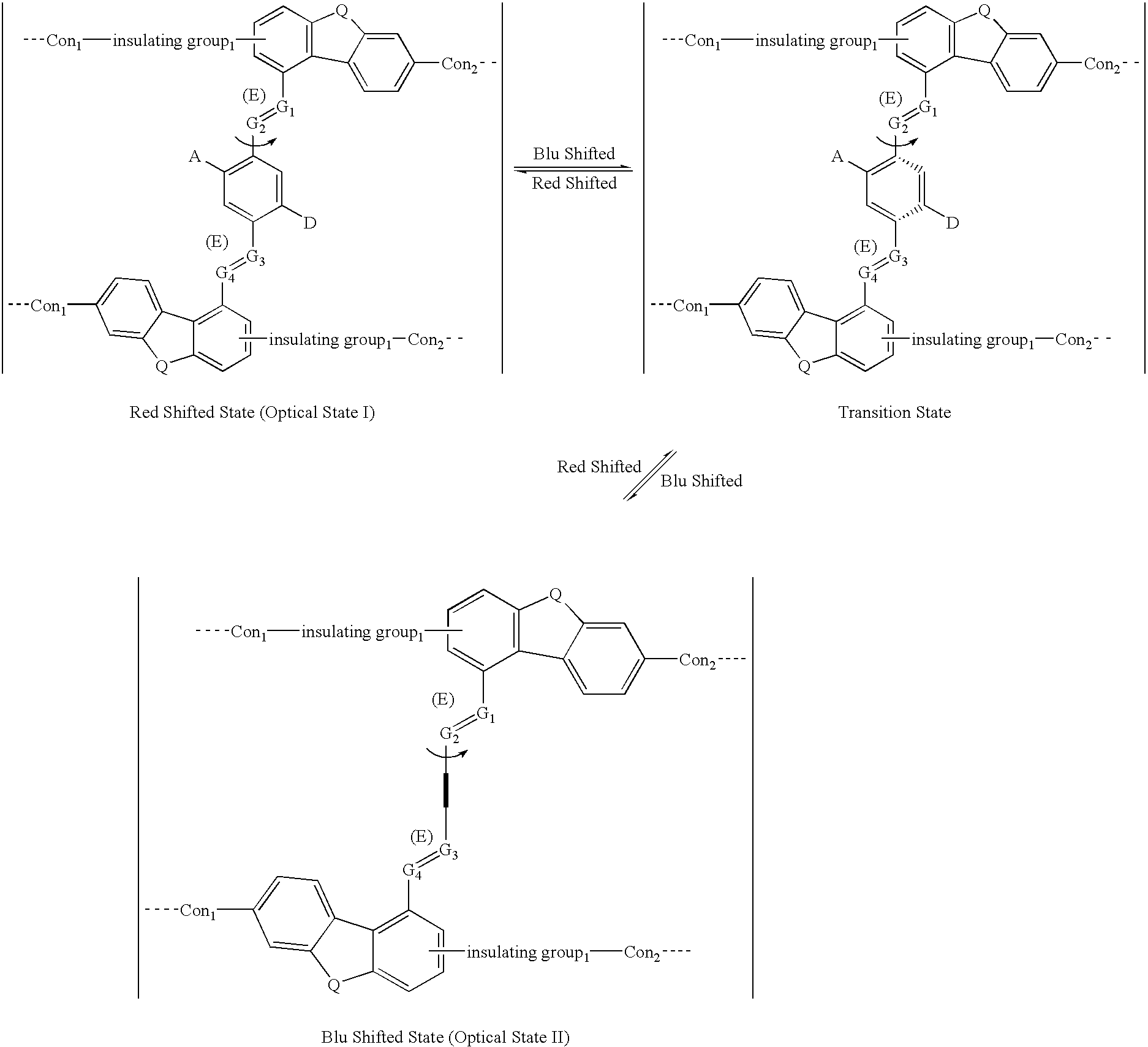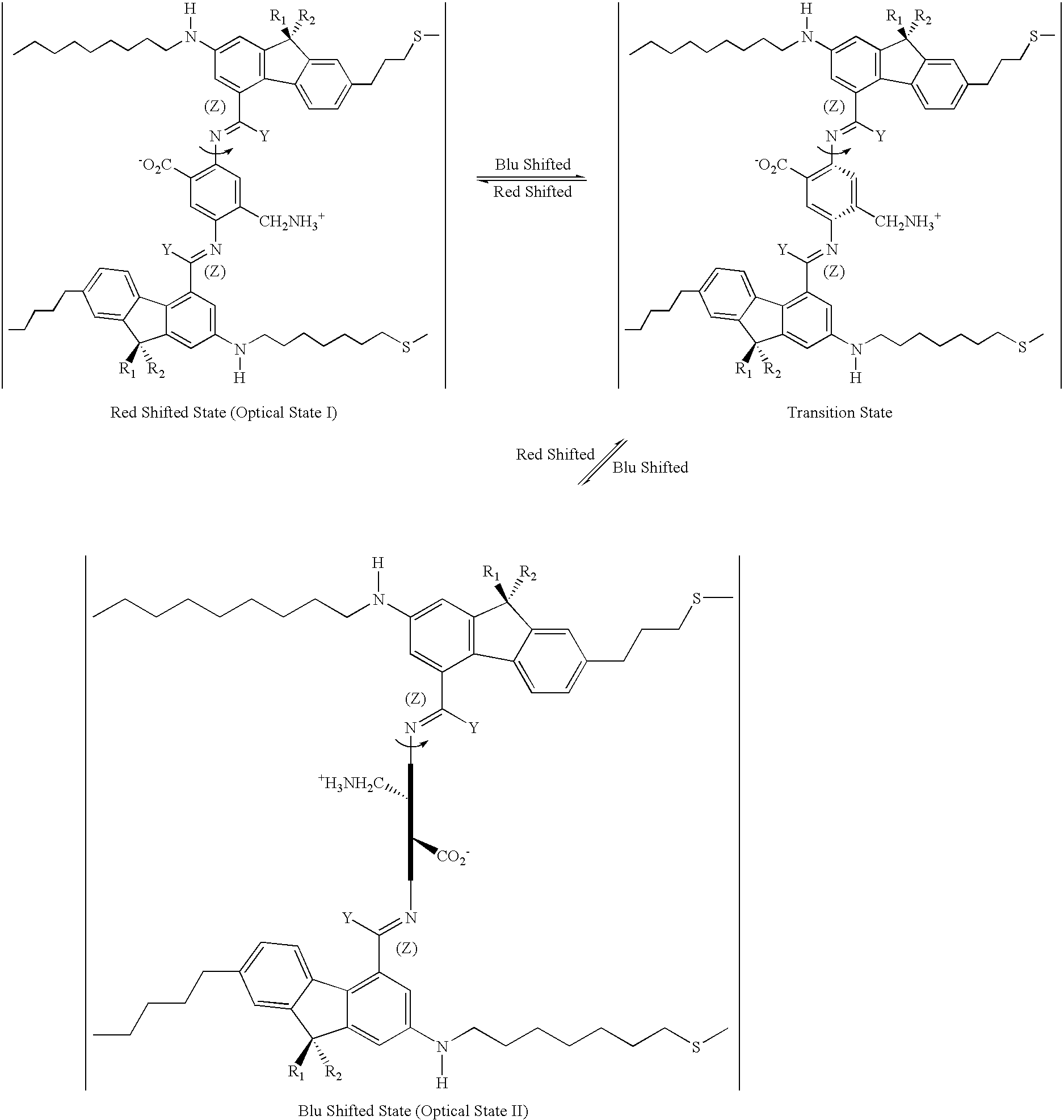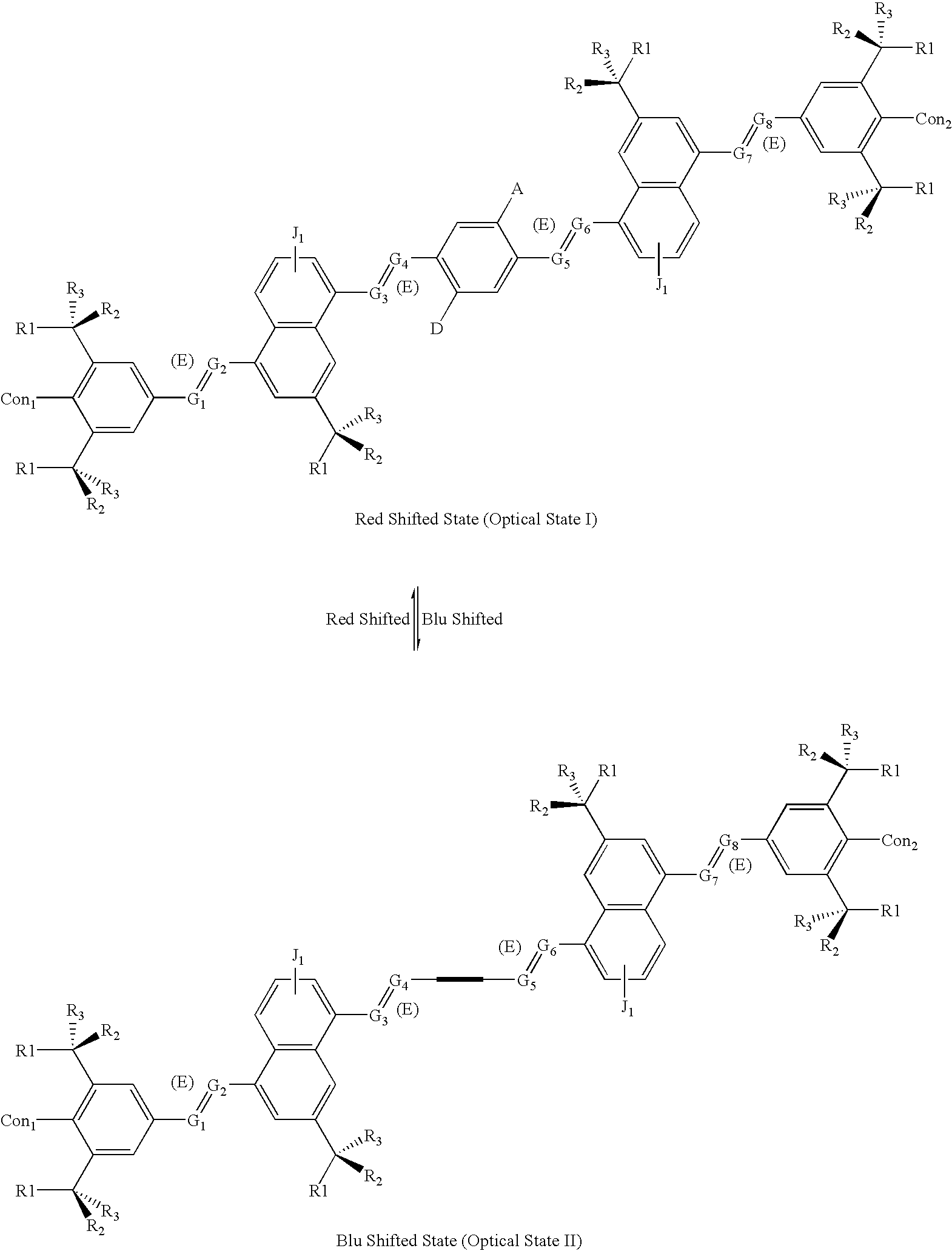Electric-field actuated chromogenic materials based on molecules with a rotating middle segment for applications in photonic switching
a technology of photonic switching and electric field, applied in the field of molecular systems, can solve the problems of slow switching time of molecules, irreversible switch, and large amount of energy spent on switching, and achieve the effect of high switching speed, stable against switching, and fast switching tim
- Summary
- Abstract
- Description
- Claims
- Application Information
AI Technical Summary
Benefits of technology
Problems solved by technology
Method used
Image
Examples
second embodiment
[0042] Since each colorant molecule in colorant layer 101 is transparent outside of the colorant absorption band, then multiple colorant layers may be superimposed and separately addressed to produce higher resolution color displays than currently available. FIG. 2 is a schematic illustration of this A high resolution, full color, matrix addressable, display screen 200 comprises alternating layers of transparent electrodes--row electrodes 201, 203 and column electrodes 202 and 204--and a plurality of colorant layers 205, 207, 209, each having a different color molecule array. Since each pixel in each colorant layer may be colored or transparent, the color of a given pixel may be made from any one or a combination of the color layers (e.g., cyan, magenta, yellow, black) at the full address resolution of the display. When all colorant layers 205, 207, 209 for a pixel are made transparent, then the pixel shows the background substrate 103 (e.g., white). Such a display offers the benef...
third embodiment
[0045] More specifically, the third embodiment as shown in FIG. 3 comprises a display screen 302, a scanned electrode array 304, and array translation mechanism 301 to accurately move the electrode array across the surface of the screen. The display screen 302 again comprises a background substrate 103, a transparent view-through layer 105, and at least one bi-stable molecule colorant layer 101. The colorant layer 101 may include a homogeneous monochrome colorant (e.g., black) or color mosaic, as described herein above. The scanned electrode array 304 comprises a linear array or equivalent staggered array of electrodes in contact or near contact with the background substrate 103. A staggered array of electrodes may be used, for example, to minimize field crosstalk between otherwise adjacent electrodes and to increase display resolution.
[0046] In operation, each electrode is sized, positioned, and electrically addressed to provide an appropriate electric field, represented by the arr...
example 1b
[0075] Example 1b below is a real molecular example of the stator-rotor-stator model mentioned above: 2
[0076] The molecule shown above (Example 1b) has been designed with the internal rotor 432 perpendicular to the orientation or current-flow axis of the entire molecule 430. In this case, the external field is applied along the orientation axis of the molecule 430 as pictured--the electrodes (vertical thick lines) are oriented perpendicular to the plane of the paper and perpendicular to the orientation axis of the molecule 430. Application of an electric field oriented from left to right in the diagrams will cause the rotor 432 as pictured in the upper left diagram to rotate to the position shown on the lower diagram, and vice versa. In this case, the rotor 432 as pictured in the lower diagram is not coplanar with the rest of the molecule, so this is the blue-shifted optical state of the molecule, whereas the rotor is substantially coplanar with the rest of the molecule on the upper...
PUM
| Property | Measurement | Unit |
|---|---|---|
| size | aaaaa | aaaaa |
| heights | aaaaa | aaaaa |
| angle | aaaaa | aaaaa |
Abstract
Description
Claims
Application Information
 Login to View More
Login to View More - R&D
- Intellectual Property
- Life Sciences
- Materials
- Tech Scout
- Unparalleled Data Quality
- Higher Quality Content
- 60% Fewer Hallucinations
Browse by: Latest US Patents, China's latest patents, Technical Efficacy Thesaurus, Application Domain, Technology Topic, Popular Technical Reports.
© 2025 PatSnap. All rights reserved.Legal|Privacy policy|Modern Slavery Act Transparency Statement|Sitemap|About US| Contact US: help@patsnap.com



